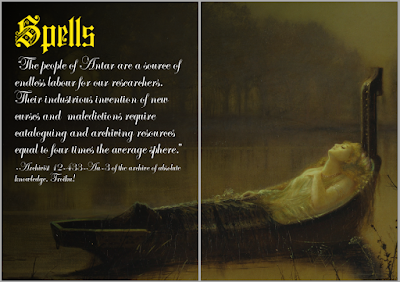This is kind of
a long and convoluted story, but this is a good time and place to share it. The
video below (audio in the Hungarian, captions in English) provides a good
summary of how Wizards of the Coast screwed the small publisher responsible for
D&D 5e's Hungarian translation, and in turn our small but enthusiastic
D&D fandom. 
For Realz Now
In short, Tuan Publishing, a local publisher of fantasy novels and games, obtained a license to publish 5e in a local translation. As other overseas properties, the deal was made through Gale Force Nine, a large international game company. Tuan, much unlike previous license holders, did a jolly good job on their translation. They put out a well-received Starter Set, and completed a translation of the core books that was not only up to license standards, but assisted and advised by a body recruited from Hungarian D&D fans as well. But the books, despite being textually approved, pre-ordered by numerous fans, and ready to print, never came out.
See, WotC and Gale Force Nine had an argument over the profits from these overseas distribution deals, and basically blackmailed each other by holding the licenses hostage, and refusing to approve them for printing. Perhaps this sort of lawfare is chump change for major international players, but it is really not chump change for a small outfit like Tuan. Still, they kept a good faith approach, and waited, along with the enthusiastic fans. What happened, though, was treachery: GF9 and WotC reached a settlement, but from this point on, simply stonewalled all communications with Tuan Publishing. Wizards of the Coast assumed responsibility for publishing D&D in four major languages (German, Italian, Spanish, and French), while not even deigning to send an official communication to the Hungarian licensee. And so it continues, with everything left hanging. The translation, created with much care and effort, is hanging in legal limbo due to a petty legal squabble between warring publishing giants. You can get the details from the video below (yes, Kildar really does speak that fast; it is his secret superpower).
I do not usually comment on new D&D: it is a fine game I do not really care about, and I have made peace with this situation. This, however, is scummy because it harms honest dealers and enthusiastic RPG fans. Shame on Wizards of the Coast and shame on Gale Force Nine for this charade, and for mistreating a Hungarian game company and Hungarian gamers. For a company that bloviates all day every day about doing the right thing, they sure don’t mind fucking over the little guy when it is convenient for them. You know, when it is not a matter of virtue signalling about adventuring wheelchairs or hashtag politics, but following a business contract and serving a fan base, even if it is not your main bread and butter.
This is, naturally, par for course for the rainbow pony brigade. And obviously, them being a large company and Tuan being a small one in a small country, they can get away with it.
And still. Is this really a company you want to give your dollars to? Is this a publisher you can trust? Or, if by accident you are a small RPG publisher in another country reading this, who had thought of dealing with these guys: can you afford being next? Right.
Food for thought.











